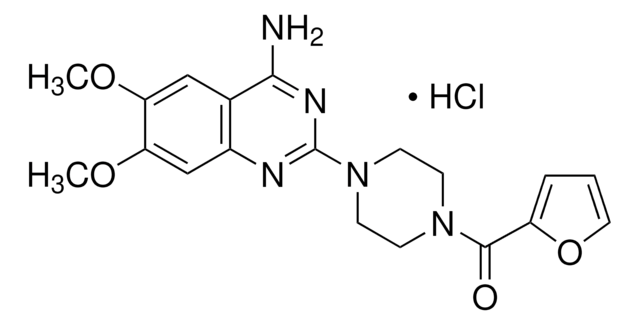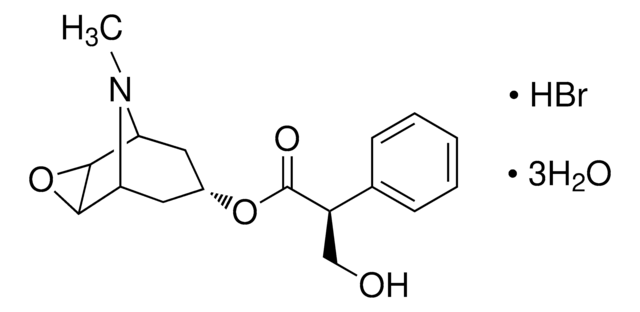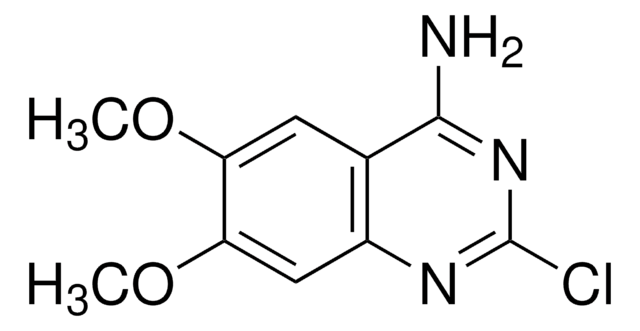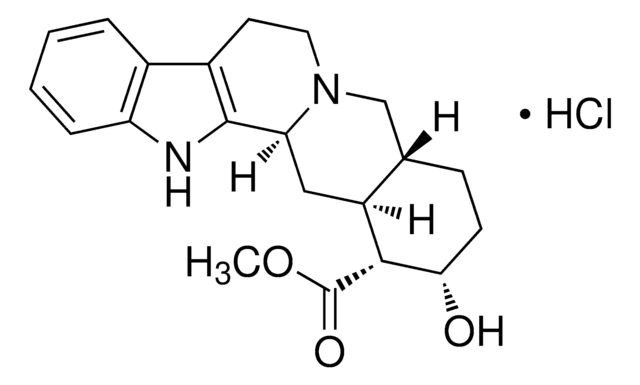Key Documents
T122
Telenzepine dihydrochloride hydrate
solid, ≥98% (HPLC)
Synonim(y):
4,9-Dihydro-3-methyl-4-[(4-methyl-1-piperazinyl)acetyl]-10H-thieno[3,4-b][1,5]benzodiazepin-10-one dihydrochloride
About This Item
Polecane produkty
Próba
≥98% (HPLC)
Postać
solid
kolor
white
rozpuszczalność
H2O: >10 mg/mL
ciąg SMILES
O.Cl.Cl.CN1CCN(CC1)CC(=O)N2c3ccccc3NC(=O)c4csc(C)c24
InChI
1S/C19H22N4O2S.2ClH.H2O/c1-13-18-14(12-26-13)19(25)20-15-5-3-4-6-16(15)23(18)17(24)11-22-9-7-21(2)8-10-22;;;/h3-6,12H,7-11H2,1-2H3,(H,20,25);2*1H;1H2
Klucz InChI
HZWCRPGARSMPNS-UHFFFAOYSA-N
informacje o genach
human ... CHRM1(1128)
Zastosowanie
Działania biochem./fizjol.
Cechy i korzyści
Kod klasy składowania
11 - Combustible Solids
Klasa zagrożenia wodnego (WGK)
WGK 3
Temperatura zapłonu (°F)
Not applicable
Temperatura zapłonu (°C)
Not applicable
Środki ochrony indywidualnej
Eyeshields, Gloves, type N95 (US)
Certyfikaty analizy (CoA)
Poszukaj Certyfikaty analizy (CoA), wpisując numer partii/serii produktów. Numery serii i partii można znaleźć na etykiecie produktu po słowach „seria” lub „partia”.
Masz już ten produkt?
Dokumenty związane z niedawno zakupionymi produktami zostały zamieszczone w Bibliotece dokumentów.
Klienci oglądali również te produkty
Nasz zespół naukowców ma doświadczenie we wszystkich obszarach badań, w tym w naukach przyrodniczych, materiałoznawstwie, syntezie chemicznej, chromatografii, analityce i wielu innych dziedzinach.
Skontaktuj się z zespołem ds. pomocy technicznej







